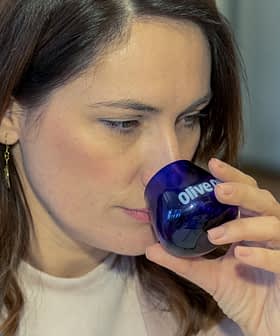A new method to authenticate and locate the origin of olive oil samples is the subject of recent research published in Science of Food.
A team of international researchers successfully verified the grade of unmarked olive oil samples using a single droplet and benchtop-sized equipment.
According to the researchers, their nuclear magnetic resonance (NMR) method is cheaper and simpler than other methods since it does not require large facilities or a laboratory environment. Additionally, operating the equipment does not require a highly-skilled, dedicated technician.
See Also:Chemical Authentication Process Can Verify Olive Oil OriginsThe scientists noted the new approach is also faster than other methods as the tiny olive oil samples do not need pre-treatment before analysis.
In their trials, the scientists used the technique to validate the authenticity of extra virgin olive oil and verify virgin olive oils and some refined olive oils. Olive oil samples were collected in Braga, Portugal, and through online sale channels.
The new method allowed the researchers to correctly identify the 95 olive oil sample grades out of 100. The result is significantly higher than other methods, such as near-infrared spectroscopy (84 out of 100) and ultraviolet-visible spectroscopy (73 out of 100).
The authors said traditional NMR approaches are affected by several drawbacks, such as “costly cryogenic cooling gases and complicated pre-analysis steps.”
They added that none of the previous methods “are simple to use, [they all] require minimal sample preparation, nor present short turn-around time.”
More specifically, the new method deploys NMR relaxometry, a proven method to compare olive oil sample microstructures to known benchmarks rapidly.
The analysis is meant to identify the slightest differences among olive oil samples, such as their physiochemical composition or molecular microenvironment. Those differences induce substantial changes in the relaxation mechanism, allowing precise detection.
The researchers also believe their approach can be used to identify olive oil products based on the regions of origin.
The new method accounts for genotypic, environmental and farming distinctions to help locate the sample origin using a specific dataset of olive oil traits commonly used in such analyses.
Due to machine learning techniques, the new method is designed to improve its performance over time as more samples are analyzed and compared.
Recently, NMR has been used to measure phenolic compounds in extra virgin olive oil, identify olive oil blends and discern the transformational processes applied to the product. Several industrial applications of different NMR methods are available on the market.
Due to the proven ability of NMR to identify polyphenols, the International Olive Council was considering listing the method as a way for producers to identify their olive oil as extra virgin on the labels.








